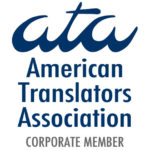June will definitely be an interesting and busy month for translators. Look at all the translation-related events that will take place everywhere in the world this month!
June 2013
1st -10th
Invitation to Participate in the First Workshop of Translation of Children’s Literature
Buenos Aires, Argentina .
3rd -10th:
European Festival of Theatre Translation
Centro Cultural El Torito, Madrid, Spain
5th:
Translation Risk Management (Webinar)
Internationalization Cost Study (Webinar)
7th -8th:
7th Annual National Council on Interpreting in Health Care (NICHC) Meeting
“Roots, Rebellion, (R)Evolution: Language Access in Health Care –Past, Present and Future”
Seattle, WA, USA
8th -9th:
European International Conference “New Demands on the Translation Industry”
Proz.com
Porto, Portugal
10th -11th:
TAUS, Dublin, Ireland
12th:
TAUS Machine Translation Showcase
TAUS, London, UK
The meetings are intended to raise awareness about and promote the industry’s informed use of machine translation.
12th -14th:
Localization World LTd, London, UK
It’s an opportunity to exchange information in the language and translation services and technologies market.
13th:
Auditing your Processes and Content for Localization
The workshop will discuss how to evaluate documentation set and processes for reuse, metadata, content componentization, internationalization, terminology and other issues.
The Localization Institute, Golden, Colorado, USA
14th -15th:
4th North American Summit on Interpreting
Reston, VA, USA
17th -28th:
Translation Research Summer School UK
Intensive research training in translation and intercultural studies for prospective researchers in the field.
Universities of Edinburgh and Manchester, University College London, London, UK
18th:
American Translators Association Continuing Education Webinar
“Smoking Guns”: Looking for Evidence and Overcoming Hurdles in Legal Document Review and Translation
23rd -19th July:
The Art of Literary Translation
To bring each student’s translation to the next level of refinement.
Columbia University School of the Arts, Paris, France
24TH -29th:
Edinburgh Interpreting Research Summer School,
Heriot Watt University, Edinburgh, Scotland, UK
This course will be relevant to researchers interested in Conference Interpreting and Public Service Interpreting alike, for both spoken and signed languages.
25th-26th:
International Quality and Productivity Center, London, UK
28th -30th:
Eighth Conference on Legal Translation, Court Interpreting and Comparative Legilinguistics,
To provide a forum for discussion in those scientific fields where linguistic and legal interests converge, and to facilitate integration between linguists, computer scientists and lawyers from all around the world.
Institute of Linguistics at Adam Mickiewicz University, Poznan, Poland
29th:
9th Conference Iowa Interpreters & Translators Association
Des Moines, IA, USA
Do you know of any upcoming event? Send us an email and we will publish it!













